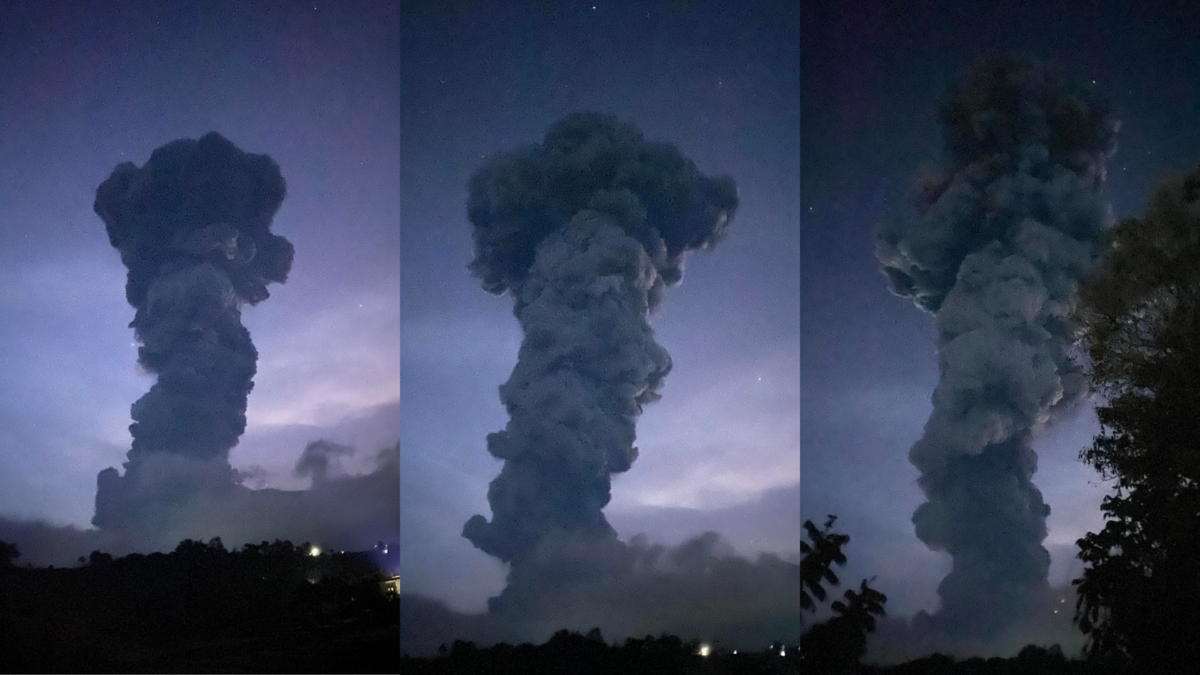
Kanlaon Volcano or Mt. Kanlaon in Negros Island erupts on Monday evening, June 3, 2024, producing a 5-kilometer plume and prompting the Philippine Institute of Volcanology and Seismology (Phivolcs) to raise the volcano’s alert status to Level 2. —Ethan Asentista-Khoo
MANILA, Philippines — All tourism-related activities within Canlaon City in Negros Oriental are suspended, the Department of Tourism (DOT) on Tuesday announced after Kanlaon Volcano continued its unrest and explosive eruptions.
According to the DOT in an advisory, entry to the Mt. Kanlaon Nature Park is also strictly prohibited.
READ: Phivolcs still studying if Kanlaon Volcano’s eruption is ‘phreatic’
Furthermore, all tourism-related activities within Kanlaon’s permanent danger zone (PDZ) are also suspended.
“Travelers are strongly advised to avoid the PDZ which extends a four-kilometer radius from the summit,” said the DOT.
“All tourism sites and activities within Canlaon City in Negros Oriental are suspended,” it added.
READ: Kanlaon Volcano erupts; Phivolcs raises Alert Level 2
Monitor bulletins
The DOT then advised the public to monitor Kanlaon bulletins, as well as maintain active awareness of local conditions when traveling to areas within the vicinity of Mt. Kanlaon on Negros Island.
“Given the current volcanic activity, travelers should stay informed about potential flight cancellations or delays. Ash clouds from the volcano can affect air travel, leading to disruptions in flight schedules,” the DOT said.
It also directed its regional offices in Western Visayas and Central Visayas to closely monitor developments in the volcano and to make necessary preparations.
Kanlaon erupted on Monday night at exactly 6:51 p.m., lasting for six minutes and producing a plume that rose up to 5 kilometers.
Currently, the Philippine Institute of Volcanology and Seismology (Phivolcs) has placed Kanlaon under Alert Level 2 and advised civil aviation authorities to avoid flying close to the volcano’s summit.
It also warned that “chances of similar explosive eruptions occurring are significant,” increasing the threat of volcanic hazards such as pyroclastic density currents and ballistic projectiles, especially in its PDZ.